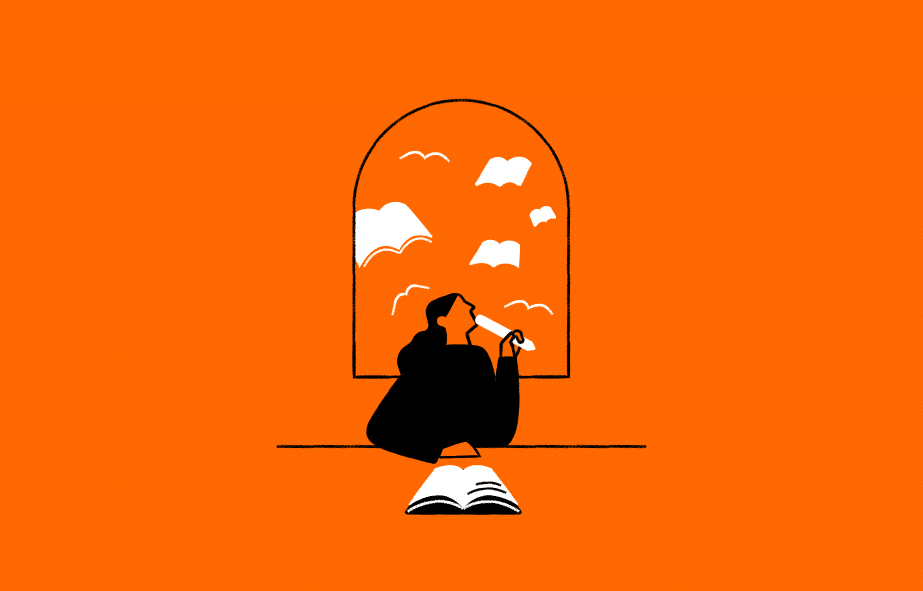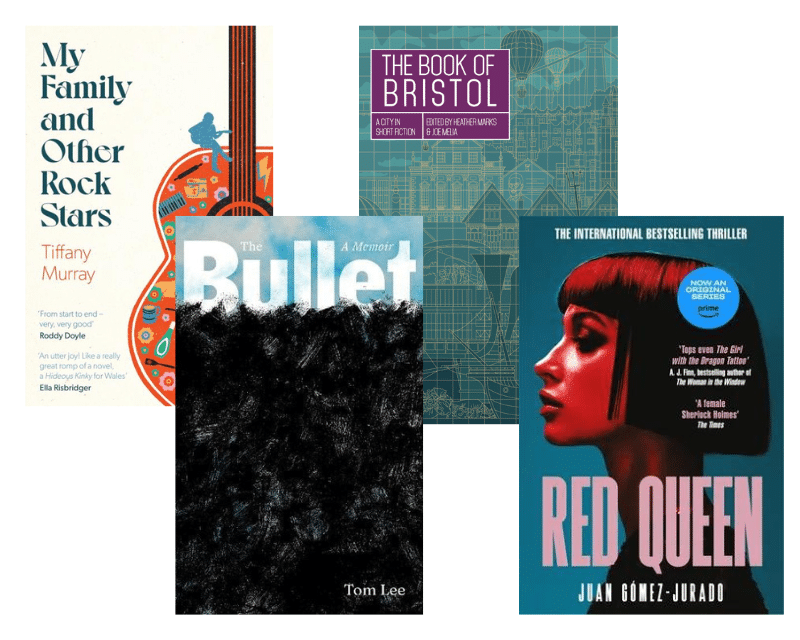- Collected
- Article
The Story Of Ourselves
Why we need narratives

- 22 June, 2020
- Miranda France
Perhaps some time recently, before lockdown, you dropped into a high-street coffee chain and noticed, while sipping your latte, that the story of the farmer who produced your coffee beans was reproduced on a wall in front of you. A few lines described Pedro’s difficult upbringing in a precarious region of Central America and how, with help from this multinational company, he now cultivates x hectares of coffee, producing x number of coffee beans a year, from which x number of cups, including yours, are made.
Now ask yourself: did you empathise with Pedro? Did learning about his story improve your experience of the café? Did the coffee even taste better as a result of following Pedro’s travails and his ultimate triumph?
Many companies, large and small, increasingly reckon that it does. Analysts have found that products which were once sold on the merits of their features and design, shift faster when a compelling story is attached. Neuroeconomist Paul Zak has even measured the brain activity of people watching a James Bond film and observed the ‘neural ballet’ that takes place in response to the gripping elements of a story.
For that reason, ‘Tell a story’ is nowadays the mantra behind marketing and ‘customer outreach’ and a multitude of websites and workshops have sprung up offering advice on how to ‘craft an effective product story’.
But storytelling isn’t only a popular advertising tool. In his new book Radical Uncertainty: Decision Making Beyond the Numbers, written with John Kay, (Little, Brown), ex Bank of England director Mervyn King claims narrative to be a better guide to economic forecasting than crunching numbers. On Radio Four he told Andrew Marr that ‘When we talk to each other, we talk in terms of stories and narratives…Even when economists come up with new ideas, they talk to their colleagues in stories and narratives over coffee first, before going away to write their models.’
Stories certainly have the power to focus attention on a problem. That’s why BBC reporters so often use the experience of one individual as a way to explain the bigger picture. It is easier for viewers to grasp the horror of conflicts in Syria or Yemen if we can empathise with one family, living through the trauma, than if the situation were explained to us by an expert in geopolitics pointing at bits of the map. Empathy is the first step towards understanding.
As a Royal Literary Fund Fellow at NHS England, I find that people who come to me for writing advice are increasingly after these storytelling skills, whether their aim is to teach student nurses, to explain a new project to stakeholders or to communicate medical findings to the public (even someone from Accounts once asked me to help him craft ‘a compelling story’). It is a truism that business reports rarely get read all the way through, but when narrative techniques underpin the format, the reader’s attention is less likely to stray.
All this should be welcome news to writers, because telling stories was our business long before business made it theirs. Weren’t we doing it in medieval taverns and public squares — even back in the caves? Yet, just as the world of commerce discovers stories, I wonder if we are perhaps falling out of love with them. The rise in autofiction, the success of works such as Rachel Cusk’s ‘anti-plot’ trilogy of novels, and Olivia Laing’s Crudo, suggest a loss of faith in the story, especially the life story.
Like other writers, I sometimes worry that a story seems too neat a package for nonfiction. I’ve written two nonfiction books, on Argentina and Spain, that required selecting some aspects of my life in those two countries while leaving others out. I had to shape my own experience, or ‘story’, into something that would be compelling writing, and treat real people I had met rather as though they were characters. I’m currently working on a book that will also incorporate elements of memoir, and again wondering how to do that in a way that satisfies the demands both of narrative and truthfulness. Life is messy. Is it right for us to give it a shape, with a beginning and ending and a narrative arc to join the two?
The question becomes more pertinent as the popularity of Life Writing courses grows. So many aspiring writers feel they have a story to tell. Yet that urge to ‘tell your story’ or ‘your truth’ is a recent phenomenon. Writer Alice Jolly told me that she found few personal accounts she could draw on when researching her novel Mary Ann Sate, Imbecile, a richly imagined memoir of a nineteenth-century servant girl.
‘The whole concept of the individual was not fully developed then,’ says Jolly. ‘People in general, but particularly poor people, would simply not have thought of putting themselves centre stage and telling their own stories.’
Have we become more self-centred in the twenty-first century, then? Almost certainly — but let’s not be too hard on ourselves: this new willingness to put personal experience at the heart of a narrative owes as much to our fascination with other people as to self-interest. Anybody’s life story can be compelling, so long as we are aware of the artifice involved in telling it.
Creating a story is a conspiracy between author and readers. The reader looks for structure to be provided in the form of a journey or narrative arc. The author, with varying degrees of artistry – shading into deception – shapes her experience to that template. An experienced writer or editor will quickly recognise the plot points on which the story turns — the dreadful event, the difficult start, the overcoming of adversity.
It’s a conspiracy because all of us, whatever our heritage and traditions, know how stories work. We watch television and films; we read books. We overhear anecdotes on public transport. Even a three-minute song like ‘I Heard it Through the Grapevine’ or an advert for gravy granules tells a story that is quickly grasped because everyone knows the rules of narrative. The danger is that we become so used to stories going one particular way that we don’t even acknowledge how hard it would be to countenance an alternative. That’s when stories risk sounding like clichés, losing their ability to say something new.
If I told you, for example, that my father harshly punished me for spending time with friends when I should be studying as a child, I could expect a universal response of dismay and sympathy from British readers. Yet in other parts of the world, the response might universally be in favour of my father’s regime. If I tried telling British readers a different story, one in which my father’s beatings were instrumental in my achieving great things later in life, they would likely reject it. Reviewers might question my interpretation of events, wonder if I was psychologically damaged. Publishers would probably steer well clear of it. There are only so many ways readers are prepared to let a story unfold.
So is it ever possible to break free of the strictures, to say something completely new, something absolutely truthful? The short answer is ‘no’. In telling a story, we already know its outcome and are bound, with hindsight, to weigh all its components differently. ‘Who knows,’ asks Michel Leiris, in Manhood (1984, translated by Richard Howard), ‘if I am not attributing to these recollections a meaning they never had [and] resuscitating this past in a misleading manner?’
The only way to avoid writing with hindsight might be to turn our story into a kind of continuous narrative throwing shape and plot to the wind, a Borgesian experiment in which nothing is left out. Even Karl Ove Knausgaard’s 3,600 page autobiographical series, My Struggle, doesn’t go quite that far.
If we want to continue reading life stories that come packaged as books, there’s no choice but to accept some artifice. But we can also be reassured that the urge to tell stories will always produce writing that reflects the truth of human experience on some level, even if the details are not themselves trustworthy. As Pablo Picasso said, ‘We all know that art is not truth. Art is a lie that makes us realise truth.’ One way or another, in different styles and formats, writers will keep exploring truth through stories, long after the market research departments have found another fashionable way to sell their products.
You might also like:
RLF Fellows’ News: May 2024
Publishing RLF Fellow Tom Lee’s new book, The Bullet, his memoir about family and mental health, has recently been published…
Her Majesty The Queen is announced as our new Royal Patron
To mark the first anniversary of Their Majesties’ Coronation, it has been announced Her Majesty The Queen will take on…
WritersMosaic & Jhalak launch The Review today
The first issue of The Review by WritersMosaic & Jhalak is out today. The Review is an editorially independent, 20-page…


